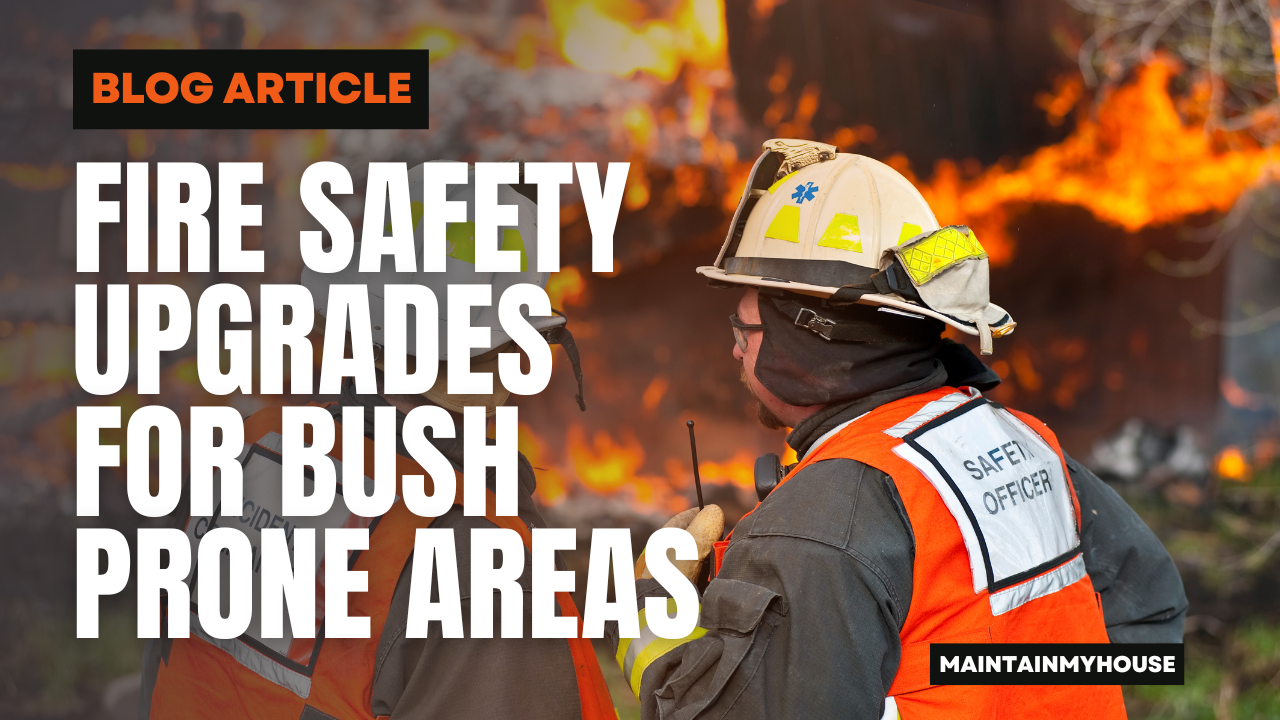Why Fire Safety is Essential in Bushfire-Prone Regions
Is your home really ready for the next bushfire season? Australia’s increasing bushfire risks have made it critical for homeowners—especially those living near bushland—to prioritise safety.
Recent data from the NSW Rural Fire Service shows that bushfires have grown in frequency and intensity due to climate change. In 2019–2020 alone, over 3,000 homes were lost in the Black Summer bushfires. These catastrophic events are no longer rare.
If your home isn’t built or upgraded to withstand such threats, the consequences could be devastating—not only for your family’s safety but also for your finances. Many insurance providers in Australia now require proof of bushfire protection measures to honour claims.
Proactive fire safety planning isn’t just smart—it’s necessary.
Understanding Your Home’s BAL Rating
Do you know your home’s Bushfire Attack Level? Knowing your BAL rating is the foundation for making informed fire safety upgrades.
A BAL (Bushfire Attack Level) is a rating that assesses your property’s risk based on vegetation type, slope, distance to bushland, and other factors. BAL ratings range from BAL-LOW to BAL-FZ (Flame Zone). The higher the rating, the greater the need for fireproofing.
For instance, a home in a BAL-29 zone must incorporate fire-resistant materials for roofing, windows, and walls, while a BAL-FZ zone requires full flame-zone construction.
You can engage a bushfire consultant or use online BAL calculators offered by local councils to determine your rating. Once you know your BAL, you’ll understand the specific safety upgrades required under Australian Standard AS 3959.
BAL isn’t just a rating—it’s your roadmap to compliance and safety.
Ember-Proofing: The First Line of Defence
Did you know most homes ignite from embers—not direct flames? Ember-proofing could be the difference between survival and destruction.
Here are actionable steps:
-
Seal roof gaps, vents, and eaves with fireproof mesh or steel covers to block ember entry.
-
Install ember guards on gutters to stop debris buildup that fuels fires.
-
Use tempered glass or metal shutters for windows and doors, especially in vulnerable zones.
A homeowner in Victoria’s Dandenong Ranges reduced their bushfire risk significantly by simply replacing timber eaves with metal and fitting ember guards on all external openings.
When it comes to bushfire protection, tiny embers are a massive threat. Prepare accordingly.
Fire-Resistant Materials for Safer Renovations
Thinking about renovating? Choose materials that won’t burn.
Here’s how to fireproof with confidence:
-
Roofing: Opt for metal or Colorbond roofing instead of flammable timber shakes.
-
Cladding: Use fibre cement sheeting, brick, or stone—all excellent fire-resistant materials.
-
Windows and Doors: Install metal frames and toughened glass.
-
Decking and Fencing: Choose composite or metal decking and non-combustible fencing.
Take inspiration from a NSW homeowner who rebuilt their patio with composite decking and fibre cement cladding—both compliant with their BAL-40 requirements.
Every material matters. Your choices could save your home.
Creating a Defendable Space Around Your Home
Is your backyard helping—or hurting—your fire safety?
A defendable space creates a buffer zone between your home and the surrounding bush. Here’s how to design it:
-
Clear dead vegetation, mulch, and flammable debris.
-
Use native fire-resistant plants like kangaroo paw and banksia.
-
Create firebreaks with gravel, pavers, or mown grass.
-
Maintain access routes for firefighters and emergency vehicles.
By following CFA landscaping guidelines, a homeowner in regional Victoria created a 30-metre clear zone around their house, dramatically reducing fire risk.
Smart landscaping isn’t just aesthetic—it’s lifesaving.
Fire Safety Tech and Smart Upgrades
Can technology help protect your home from bushfires? Absolutely.
Explore these modern bushfire safety home improvements:
-
Roof-mounted sprinkler systems and misting units help douse embers before they cause ignition.
-
Ember detection alarms alert homeowners before fire becomes visible.
-
Remote shut-off systems for gas and electricity limit damage and improve safety.
For example, homeowners in Perth Hills installed an ember alert system connected to their smartphones, giving them precious early warning.
Pair smart tech with solid design for next-level fire resilience.
Government Regulations and Compliance
Are you legally compliant with bushfire safety standards?
All Australian states enforce building codes based on AS 3959. Your local council may also impose stricter rules depending on location and BAL rating.
Non-compliance may result in:
-
Insurance claim denials
-
Council fines
-
Delayed approvals for future renovations
Compliance isn’t just about following rules—it ensures that safety measures are effective and your investment is protected.
Do it right. Do it legally.
Finding Trusted Professionals for Bushfire Upgrades
Don’t know who to trust with your bushfire upgrades? Start here.
Use trusted platforms like Maintainmyhouse to find experienced, reviewed, and licensed professionals who specialise in bushfire protection.
Here’s what to look for:
-
Valid licensing and insurance
-
Familiarity with AS 3959 and BAL compliance
-
Transparent quoting and local experience
Always get multiple quotes, check reviews, and ask for references.
Reliable help makes all the difference in fire safety.
Budgeting and Planning for Upgrades
Worried about costs? Smart planning saves money and stress.
Typical cost estimates:
-
Ember guards: $800–$2,000
-
Fire-resistant cladding: $10,000–$25,000
-
Sprinkler systems: $3,000–$8,000
Look out for government rebates like the NSW Bushfire Resilience Grant or VIC Emergency Management Rebates.
Break your project into phases and prioritise high-risk areas first. A homeowner in Blue Mountains staged upgrades over 12 months, staying within budget and achieving full compliance.
Every dollar spent on safety is a dollar well-invested.
Final Thoughts: Secure, Smart and Stylish
Fire safety upgrades for bush prone areas aren’t just essential—they can be beautiful.
By integrating fire-resistant materials, smart landscaping, and compliant tech, you’ll not only protect your home but also boost its aesthetic and value.
Stay safe, stay smart, and always build with the future in mind.
